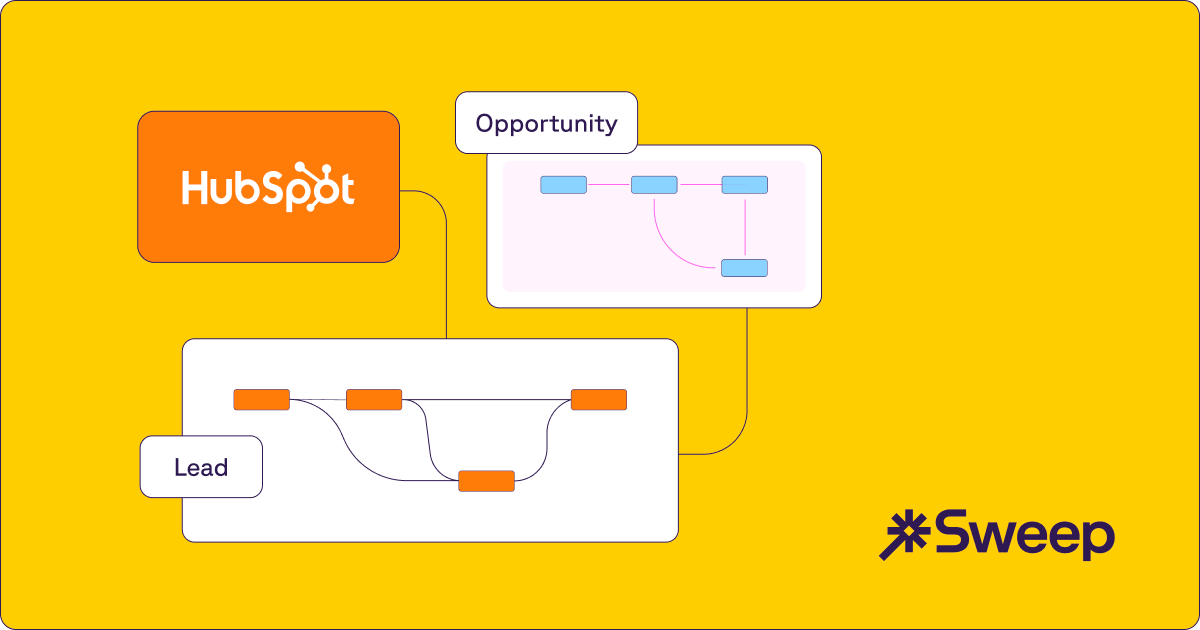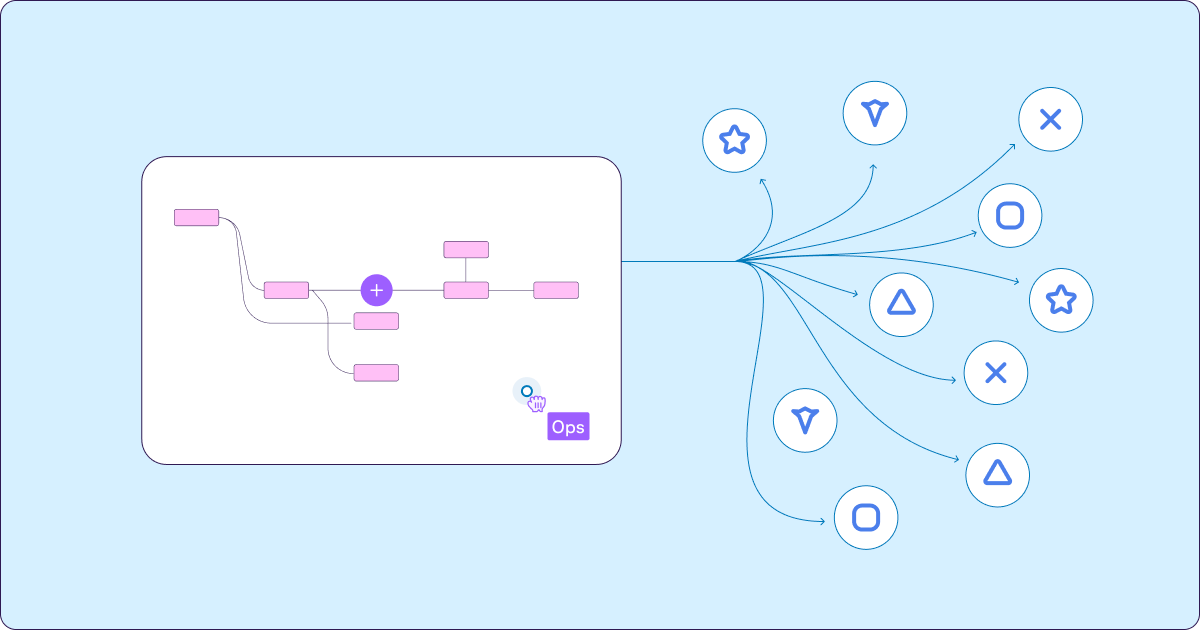
In today’s digital age, the customer journey is a complicated one. In fact, Google reports that buyers are frequently taking six or more actions before deciding to purchase a product. That means that not only does every marketing touchpoint need to be tracked to ensure proper attribution, but that other non-marketing activities would likely also need to be measured. For example, if a person spoke to a colleague or read a third-party review of the product itself.
This kind of consumer behavior makes marketing attribution a bigger challenge than ever before. And without proper attribution, it can be increasingly difficult to understand how marketing efforts are performing. This becomes an issue when teams are looking to determine the ROI of marketing spend and how to potentially shift strategies based on actual data points.
Accurate marketing attribution relies on clean, reliable data. But data hygiene can be a major hurdle. It's crucial to have systems in place to ensure data quality and accuracy.
In this article, we’ll break down why marketing attribution matters and how you (and your team) can take the necessary steps to get a clear view of your entire customer journey.
Understanding marketing attribution
Marketing attribution is a crucial tool for modern marketers. It helps measure the impact of various marketing activities including paid campaigns, email, events and more. With the rise of digital marketing channels, it can be difficult to pinpoint exactly what touchpoints contributed to a customer conversion. But the right attribution model can and should adapt to address this increase in complexity.
The basics of marketing attribution
At its core, marketing attribution assigns credit to marketing actions that contribute to conversions. These actions could be emails, social media interactions, or ad clicks. Attribution models vary, and choosing the right one depends on your business goals.
Single-touch attribution might focus on the first interaction, while multi-touch considers every step in the customer journey. Each model offers unique insights, influencing how you allocate budget and resources. Understanding these basics is key to leveraging marketing attribution effectively.
Why marketing attribution is essential
Marketing attribution provides clarity in measuring the success of campaigns. It delivers insights into which channels and tactics drive results. This clarity helps in refining strategies and maximizing return on investment (ROI).
Without marketing attribution, businesses often operate blindly, wasting resources. Accurate attribution uncovers which marketing efforts yield the best outcomes. This enables data-driven decisions, improving overall marketing performance and business growth.
The evolution of marketing attribution
The landscape of marketing attribution has evolved over time. Initially, single-touch models were common. However, as consumer behavior and digital channels expanded, multi-touch models gained prominence. These models recognize the complex customer journey across multiple touch points.
The rise of big data and analytics has further fueled this evolution. Modern attribution now incorporates advanced tools and techniques for richer insights. Businesses must adapt to these changes to remain competitive and relevant in a digital-first world.
The customer journey and attribution
Understanding the customer journey is essential for effective marketing attribution. Every interaction with a brand matters, from initial awareness to post-purchase. Each step in the journey presents opportunities for engagement and conversion.
Attribution helps identify the value of these interactions. By analyzing each touchpoint, businesses gain insights into what drives conversions. This understanding informs strategic decisions, enhancing marketing effectiveness.
Mapping the customer journey
Mapping the customer journey involves identifying all potential touch points. This includes digital interactions like website visits and social media engagement. Offline interactions, such as in-store visits or events, also play a role.
The journey is not always linear. Customers may jump between different stages before making a decision. Mapping this journey requires a deep dive into customer behavior and preferences. It’s a dynamic process, adapting to new trends and technologies.
Aligning attribution with the customer journey
Aligning attribution with the customer journey ensures a holistic view of performance. This alignment helps determine where to invest in marketing efforts. Multi-touch attribution models are particularly useful here. They provide a comprehensive picture of how various interactions contribute to outcomes.
By aligning attribution with each journey stage, businesses can pinpoint valuable touch points. This allows for targeted enhancements that resonate with customer needs. Ultimately, this alignment leads to more efficient marketing strategies and improved ROI.
Attribution models explained
Attribution models play a crucial role in understanding marketing performance. These models assign credit to different touchpoints in a customer’s journey. The aim is to identify which interactions contribute most to conversions.
Selecting the right attribution model depends on your business goals. Different models offer varied insights into customer behavior and marketing effectiveness. Let’s delve deeper into two main types: single-touch and multi-touch attribution.
Single-touch vs. multi-touch attribution
Single-touch attribution assigns all credit to one interaction. Typically, it focuses on the first or last touchpoint. This approach is simple and straightforward. However, it often overlooks the complexity of the customer journey.
In contrast, multi-touch attribution distributes credit across multiple interactions. This model offers a more nuanced view of customer behavior. It recognizes that several touch points may influence a purchase decision.
Key Differences Between Single-Touch and Multi-Touch Attribution:
- Scope: Single-touch is narrow; multi-touch is comprehensive.
- Simplicity: Single-touch is easier to implement.
- Insights: Multi-touch provides deeper insights into customer interactions.
Choosing between these models depends on your marketing goals. For a detailed picture of the customer journey, multi-touch is often preferred. It acknowledges the multiple interactions that drive conversions.
Exploring different attribution models
Within single and multi-touch categories, various models exist. Each offers unique ways to distribute credit among touch points. It's essential to understand their characteristics to choose effectively.
List of common attribution models:
- First-touch attribution: Credit goes to the initial interaction.
- Last-touch attribution: The final interaction receives all the credit.
- Linear attribution: Distributes credit equally across all touchpoints.
- Time-decay attribution: Prioritizes recent interactions.
- Position-based (u-shaped) attribution: Assigns most credit to the first and last interactions.
- Custom or data-driven models: Tailored models using specific data patterns and analytics.
First-touch attribution highlights early awareness efforts. Last-touch attribution spotlights final conversion pushes. Linear attribution values every interaction equally. It is fair but may lack precision for strategic insights.
Time-decay attribution favors recent touch points. It’s suitable for campaigns with a short decision cycle. Meanwhile, position-based attribution acknowledges the importance of initial contact and closing tactics.
Custom models are data-intensive but offer precise insights. These require robust analytics to tailor attributions based on unique customer interactions. By choosing carefully, businesses can align their attribution strategy with their overall marketing objectives.
Selecting and deploying the right model can empower businesses. It enables better budget allocation and improved marketing decision-making. Adapting these models to specific needs ensures they serve the marketing strategy efficiently.
Choosing the right marketing attribution software
Marketing attribution software is essential for analyzing the effectiveness of your strategies. The right tool can transform raw data into actionable insights. However, choosing the right software involves a nuanced understanding of your business needs.
Every business has unique requirements for analyzing marketing data. It’s crucial to select software that aligns with your company's objectives and strategy. Consider both current and future needs to ensure the software can scale with your business.
Integrating with CRM systems like Salesforce
Integration with Customer Relationship Management (CRM) systems such as Salesforce is paramount. This helps in seamless data management and improved decision-making. It ensures your marketing and sales teams are aligned.
Salesforce is a powerful CRM tool widely used across industries. Integration with marketing attribution software enables tracking of customer interactions in one place. This provides a unified view of customer journeys.
Moreover, this integration facilitates better data synchronization. It helps in reducing data silos within the organization. By merging insights from both systems, businesses can optimize their marketing strategies effectively.
Additionally, integration simplifies reporting processes. It empowers teams with shared, holistic views of marketing and sales performance. This collaboration leads to more informed decisions and improved ROI from marketing efforts.
Accessing a complete view of your marketing impact across HubSpot and Salesforce
If your team is using both HubSpot and Salesforce, it’s crucial to analyze your customer journey based on data from both platforms. With Sweep’s new integration, you can capture, visualize, and attribute every step of the customer journey in one place.
Marketing, sales, and revenue operations teams often struggle to connect the dots between HubSpot and Salesforce, leading to inefficiencies that impact decision-making and performance. Without a clear view of how marketing activities influence the sales pipeline, it’s difficult to assess campaign performance or justify marketing investments. Plus, managing campaigns in two separate platforms creates inconsistencies, duplicate efforts, and reporting gaps.
Sweep’s seamless integration gives your team the ability to:
- Understand how each interaction drives revenue impact
- Unify marketing attribution reporting
- Ensure clean data across teams
Now you can streamline attribution while also analyzing the true ROI of your marketing campaigns by viewing the data in one place. Plus you’ll be able to improve data accuracy, reduce duplicates and keep marketing and sales aligned with reliable information.
If you’re interested in seeing how this integration can help support your team, book a demo with a team member today.

Data hygiene and attribution accuracy
Data hygiene is foundational for effective marketing attribution. Clean, reliable data ensures accurate insights and decisions. Without it, attribution models can mislead, impacting marketing strategies negatively.
Inconsistent or duplicate data can skew results. This leads to incorrect attribution of marketing efforts. Therefore, maintaining data hygiene should be a priority for every organization.
Regular audits of data sets help in identifying and rectifying errors. Such practices bolster the accuracy of marketing analyses. Robust data management protocols are crucial in this process.
Clean data not only improves the precision of analytics but also boosts confidence in the insights gained. It supports marketers in making informed choices that enhance campaign effectiveness.
Implementing marketing attribution in your business
Implementing marketing attribution in your business can seem daunting. However, a structured approach can simplify the process and yield valuable insights. It’s essential to start with a clear strategy tailored to your business needs.
Defining your business goals is the first step. Knowing what you want to achieve will guide your attribution model choice. This alignment ensures your attribution efforts contribute to overall objectives.
Next, assess your current marketing channels. Identifying where and how customers engage with your brand is vital. This understanding helps in mapping the customer journey accurately.
Data collection is crucial for effective attribution. Implement tracking mechanisms across all channels. This comprehensive data is necessary for accurate analysis and decision making.
Choose the right attribution model based on your business requirements. It might be single-touch or multi-touch, depending on the complexity of your customer journey. Each model offers unique insights into customer interactions.
Invest in robust attribution software. This tool aids in analyzing and interpreting data efficiently. It enhances the granularity and accuracy of your insights.
Test and iterate. Implementing marketing attribution is not a one-time task. Regularly assess and refine your models and strategies. Continuous improvement is key to success.
Steps to effective implementation
Begin with a thorough audit of your current marketing activities. This helps you understand your starting point. You can identify gaps and areas that need improvement.
Develop a cross-functional team to lead your attribution efforts. This collaboration ensures all perspectives are considered. It fosters a holistic approach to implementation.
Implement a consistent tracking system across all marketing channels. This system ensures that all touch points are captured. It enhances the reliability of your attribution data.
Choose an attribution model that aligns with your business goals. This could be First-Touch, Last-Touch, or Multi-Touch, among others. Select one that best answers your key performance questions.
Integrate your attribution software with existing systems, like CRM and marketing automation. This integration provides a unified view of customer interactions. It streamlines data access and enhances analysis.
Set clear KPIs to measure the success of your attribution implementation. Regularly review these metrics to track progress. KPIs provide quantifiable targets for improvement.
Train your team on the use of attribution software. Ongoing education ensures everyone can effectively utilize the tools. A knowledgeable team drives the success of marketing attribution efforts.
Best practices for success
There are several best practices to ensure the success of marketing attribution.
1. Maintain data cleanliness: accurate data leads to trustworthy insights and better decisions.
2. Implement a feedback loop with your sales team: their insights on customer interactions are invaluable and will improve attribution accuracy.
3. Regularly test different attribution models: this flexibility can reveal which model provides the most insights.
4. Align attribution efforts with strategic business goals: this ensures that marketing contributions are measurable and impactful. Plus, it helps in justifying marketing investments.
5. Use attribution data to forecast trends and adjust strategies: anticipating shifts in customer behavior is a competitive advantage. Data-driven adjustments are crucial for staying ahead.
6. Communicate attribution insights effectively to stakeholders: clear, concise reporting builds trust in the data.
The impact of marketing attribution on business growth
Marketing attribution is more than just a tool; it’s a strategic imperative. It helps businesses understand the effectiveness of their efforts. This understanding directly impacts growth and ROI.
In today's competitive market, data-driven decisions are vital. Marketing attribution provides the clarity needed for these decisions. It aligns marketing strategies with business goals efficiently.
With proper attribution, marketers can allocate budgets wisely. They can pinpoint which channels drive the most value. This precision fuels smarter investments and enhanced outcomes.
Moreover, attribution cultivates better customer experiences. By mapping and understanding the customer journey, businesses can optimize touch points. Improved engagement drives customer satisfaction and retention.
Finally, as technologies advance, so must attribution techniques. Future-focused businesses will continue to innovate. Staying adaptive ensures resilience in a fast-evolving landscape.
If you’d like to see how Sweep’s HubSpot and Salesforce integration can help you get a clear sense of your customer journey, book a demo with a team member today.













